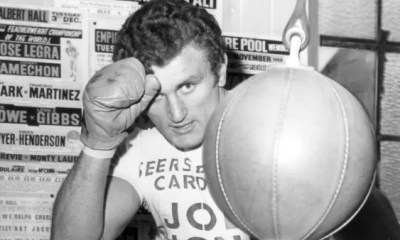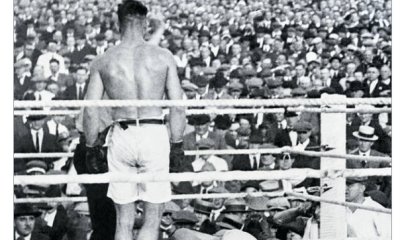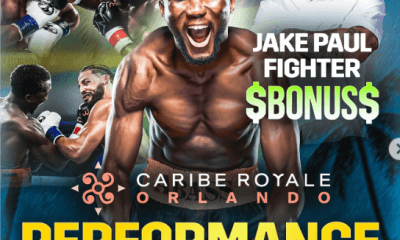Featured Articles
When Boxing was Big in Butte, Montana
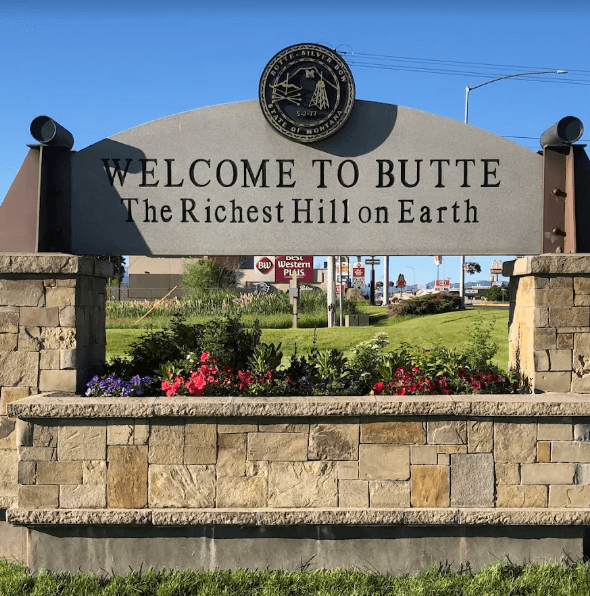
When Boxing was Big in Butte, Montana
Prior to World War I, prizefighting in the United States was controversial. Preachers denounced it from their pulpits and abolishing it was on the agenda of reform groups such as the Women’s Christian Temperance Union.
By and large, the anti-prizefighting lobbies met their greatest resistance in places with large Irish populations. That brings us to our trivia question: Name the U.S. city which currently has the highest proportion of Irish-Americans?
I’m guessing that most of you would have selected Boston. That’s a fair guess. There was a period circa 1870 when there were more Irish immigrants in the adult population of Boston than native-born Bostonians. The Irish have dominated the political life of the city for roughly 150 years.
But Boston is incorrect. The American city with the largest percent of the population identifying as Irish-American is Butte, Montana.
Well, you might say, that runs counter to your opening paragraph wherein you suggest that prizefighting tended to flourish in places with large Irish populations. Boxing is dead in Butte and that’s been true for many years. True enough, but that wasn’t always the case. Back in the early years of the twentieth century, boxing in Butte, although technically illegal, was a very popular amusement.
The peak years were 1903-1905. Four future Hall of Famers – Battling Nelson, Tommy Ryan, Barbados Joe Walcott, and Young Corbett II (William Rothwell) — fought in Butte during these years.
As was true in many other places, the biggest bouts in Butte were “festival fight promotions,” matches hitched to a multi-pronged jamboree. The grandest day of boxing in Butte was June 13, 1903, a regional holiday, Miners’ Union Day.
There was a day-night doubleheader, an afternoon fight at the baseball park pitting San Francisco phenom Jimmy Britt against Chicago’s Jack O’Keefe for the white lightweight (133-pound) championship of the world, and then, in the evening, an event at Butte’s Broadway Theater, a match between lightweights Aurelio Herrera and Kid Broad.
Herrera, from Bakersfield, California, was recognized as one of the hardest hitters in the game. He had taken up temporary residence in Butte, having fought there three times in the previous month. Kid Broad, a former Cleveland newsboy, born William Thomas in England, arrived in Butte 10 days before the fight, coming via New Orleans with his manager Parson Davies, one of America’s most well-known sportsmen. By then, Jack O’Keefe was already there.
Jimmy Britt and Jack O’Keefe fought 20 rounds to a draw. Herrera knocked out Kid Broad in the fourth round.
Butte had all the trappings of a classic frontier mining town – it was chockablock with gambling saloons and had a large red light district – but it was fundamentally different. It wasn’t gold or silver that drove the economy, but copper. It was also the largest mining town in the country west of the Ohio River. According to the U.S. Census, there were roughly 35,000 people in Butte circa 1905 and perhaps another 10,000 in the nearby factory-owned town of Anaconda, home to the smelter where the copper from the Butte mines was processed. Those figures have been challenged as much too low. Regardless, heavily unionized and with streetcars running down its main boulevard, Butte’s closest cousin was Pittsburgh.
One of the reasons why Butte wasn’t a bigger boxing hub was its remoteness. The closest major city was Spokane and that was 315 miles away. As a consequence, most of the fight cards in Butte were top-heavy with local men and there was no dearth of them.
Of the locals, one of the most prominent was Jerry McCarthy who fought Boston’s Honey Mellody in Butte on March 17, 1905, and was knocked out in the fifteenth round of a 20-round contest. Prior to this fight, Mellody had won and lost the white welterweight title and he would go on to become a true welterweight champion by dint of upsetting Joe Walcott.
The McCarthy-Mellody fight commenced after the finish of Butte’s St. Patrick’s Day parade. The referee was Duncan McDonald, an important cog in Butte’s pugilistic apparatus. In his fighting days, McDonald fought a memorable bout with Pete McCoy at the Butte racetrack – billed for the world middleweight title, it lasted 31 rounds – and after a stint in the state legislature he had returned to the city to open a gym for instruction in boxing, wrestling, and gymnastics.
Another prominent local boxer was Maurice Thompson who split two fights with Stanley Ketchel when both were relatively new to the game and ultimately became a frequent sidekick of Ketchel, helping the “Michigan Assassin” prepare for some of his important fights.
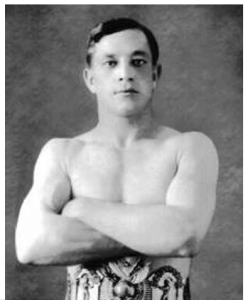
Stanley Ketchel
Ketchel was born in Grand Rapids, Michigan, but from a fistic standpoint, it was Butte that hewed him. He made his pro debut in Butte on May 2, 1903, and had 40 fights in Montana rings before trundling off to Northern California where he sprouted into one of the most talked-about prizefighters of his day and posthumously the most fabled middleweight in boxing history.
Ketchel was reputedly born on Sept. 4, 1886, which would have made him 16 years old when he had his first documented fight. Lore has it that before taking up boxing as a full-time occupation, he earned his spurs, so to speak, by knocking out scores of bigger and older men while employed as a bouncer at a Butte vaudeville palace.
There’s been more nonsense written about Stanley Ketchel than about any boxer in history, but that’s a story for another day. And while Butte in Ketchel’s day was wild and wooly, it’s likely that a man looking for trouble there was in less peril than a man looking for trouble in many American cities today.
—
TSS editor-in-chief Arne K. Lang is the author of five books including “The Nelson-Wolgast Fight and the San Francisco Boxing Scene, 1900-1914,” published by McFarland in 2012. The book can be ordered directly from the publisher (https://mcfarlandbooks.com/product/clash-of-the-little-giants) or via Amazon.
To comment on this story in the Fight Forum CLICK HERE
-
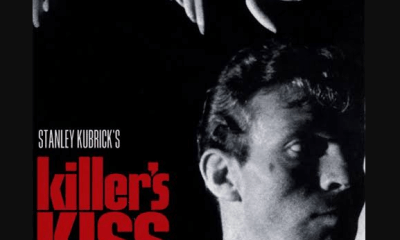
 Featured Articles4 weeks ago
Featured Articles4 weeks agoThe Hauser Report: Cinematic and Literary Notes
-
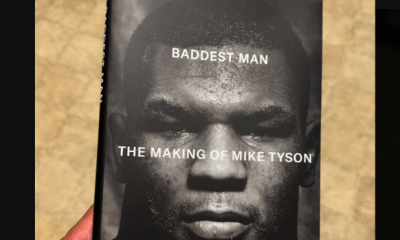
 Book Review3 weeks ago
Book Review3 weeks agoMark Kriegel’s New Book About Mike Tyson is a Must-Read
-
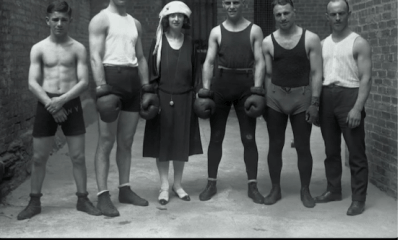
 Featured Articles2 weeks ago
Featured Articles2 weeks agoThe Hauser Report: Debunking Two Myths and Other Notes
-
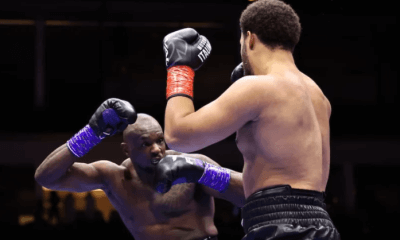
 Featured Articles3 weeks ago
Featured Articles3 weeks agoMoses Itauma Continues his Rapid Rise; Steamrolls Dillian Whyte in Riyadh
-
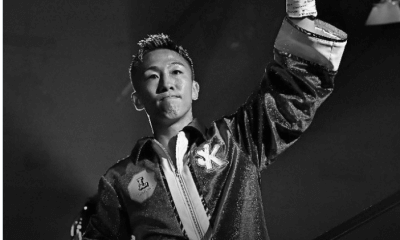
 Featured Articles4 weeks ago
Featured Articles4 weeks agoKotari and Urakawa – Two Fatalities on the Same Card in Japan: Boxing’s Darkest Day
-
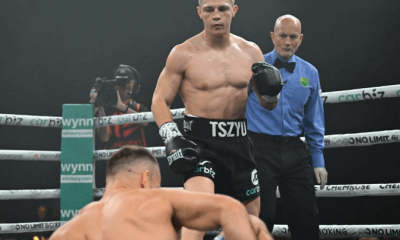
 Featured Articles2 weeks ago
Featured Articles2 weeks agoNikita Tszyu and Australia’s Short-Lived Boxing Renaissance
-
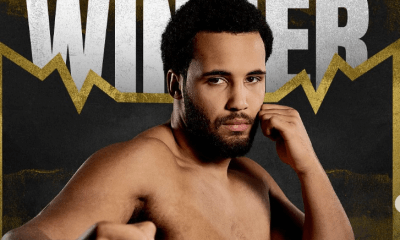
 Featured Articles2 weeks ago
Featured Articles2 weeks agoIs Moses Itauma the Next Mike Tyson?
-
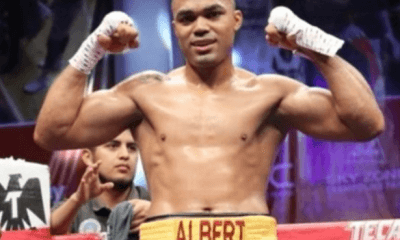
 Featured Articles4 weeks ago
Featured Articles4 weeks agoRamirez and Cuello Score KOs in Libya; Fonseca Upsets Oumiha


